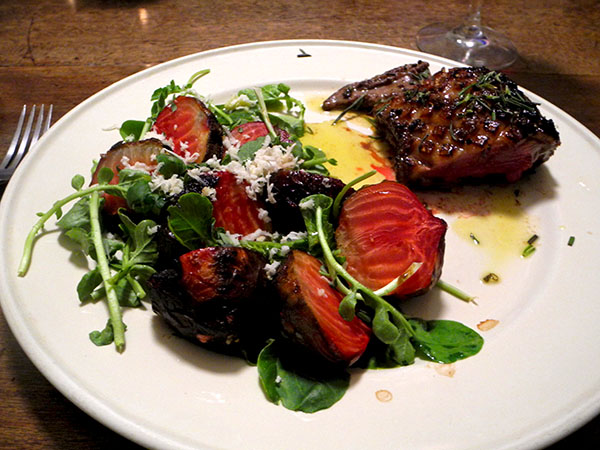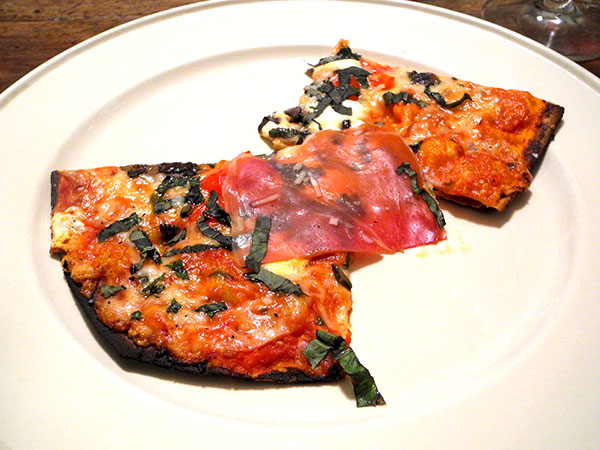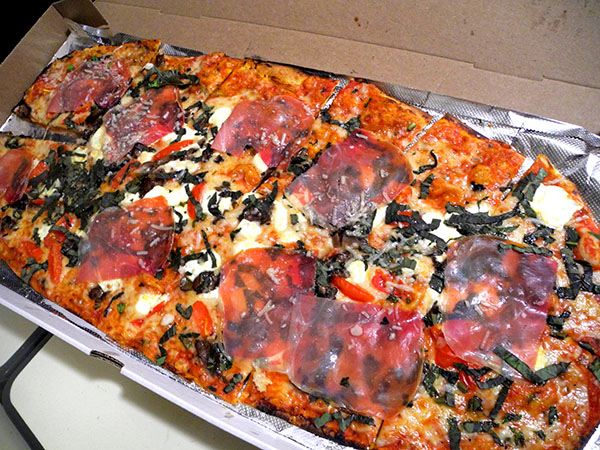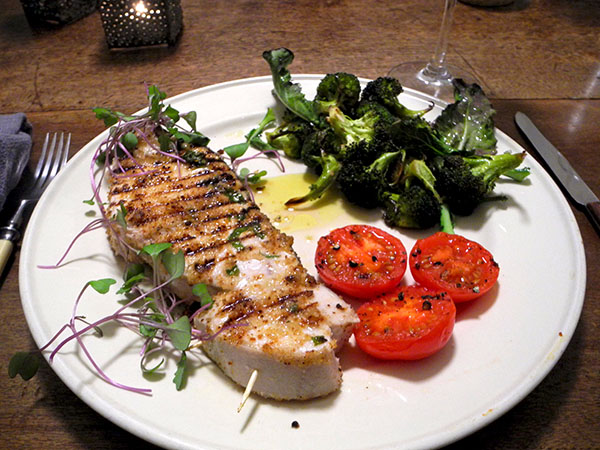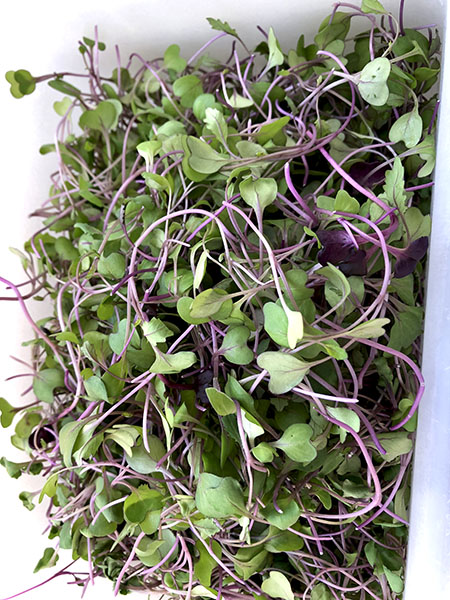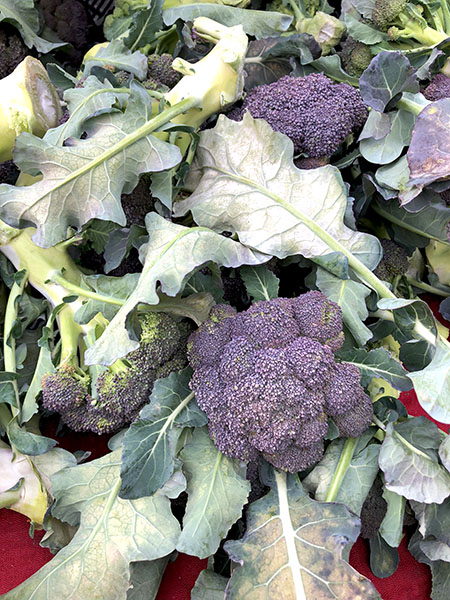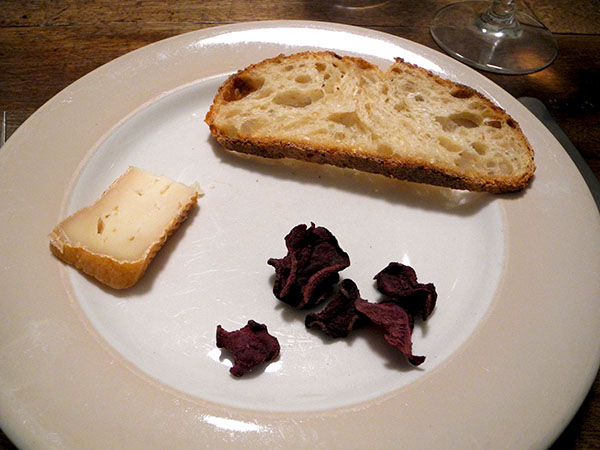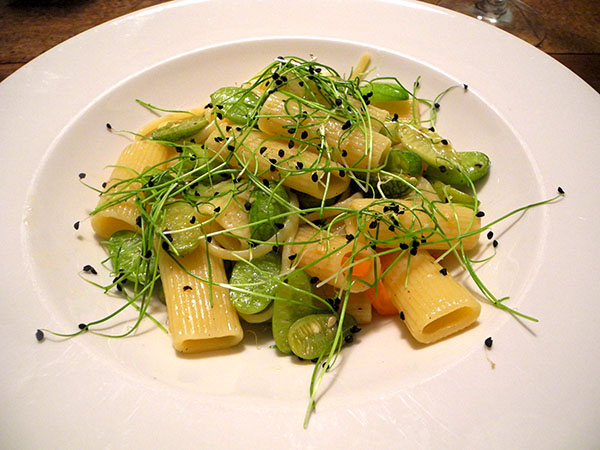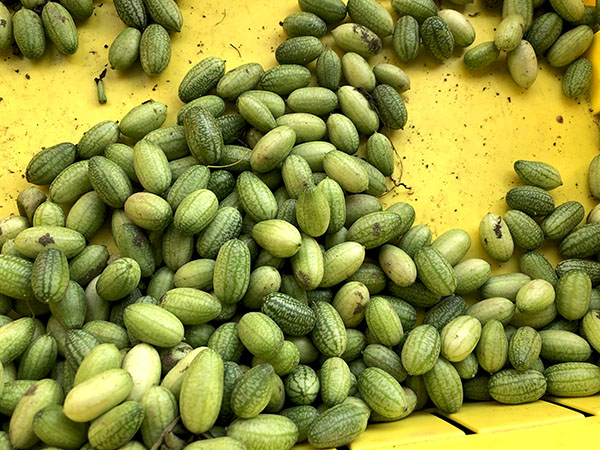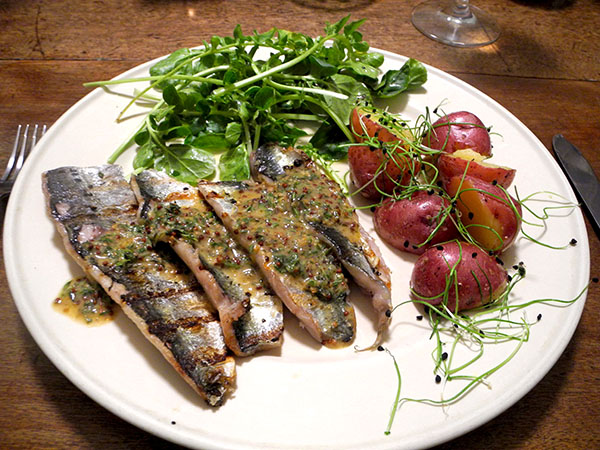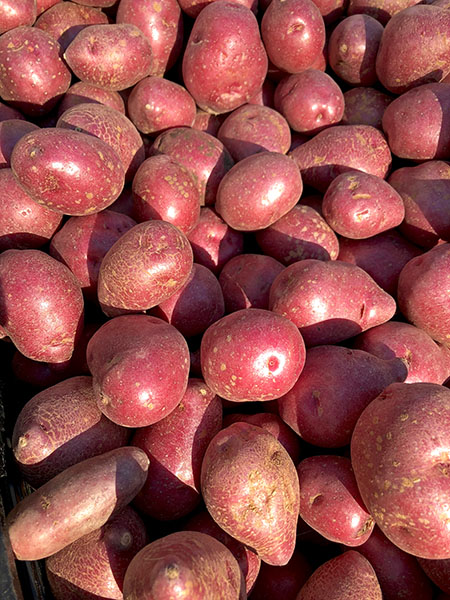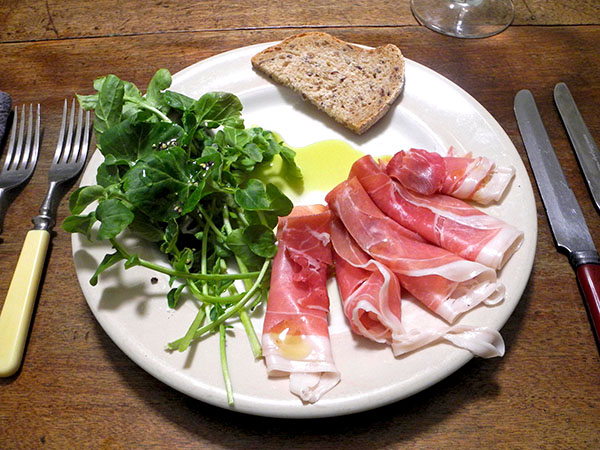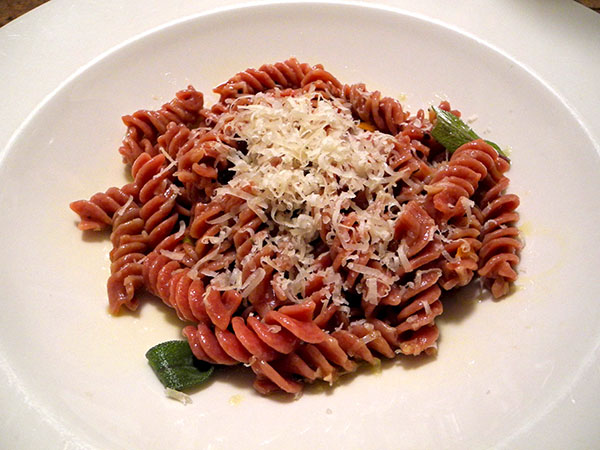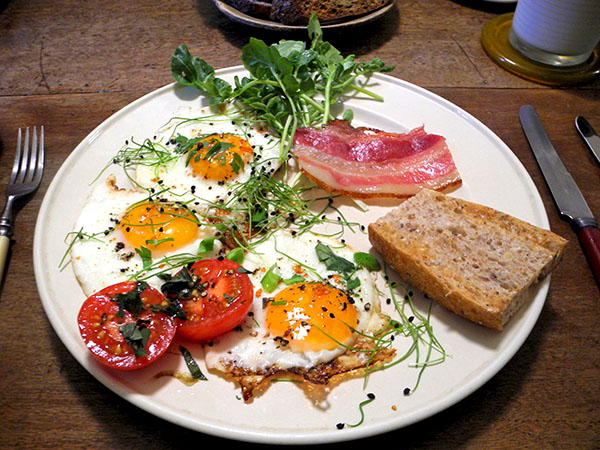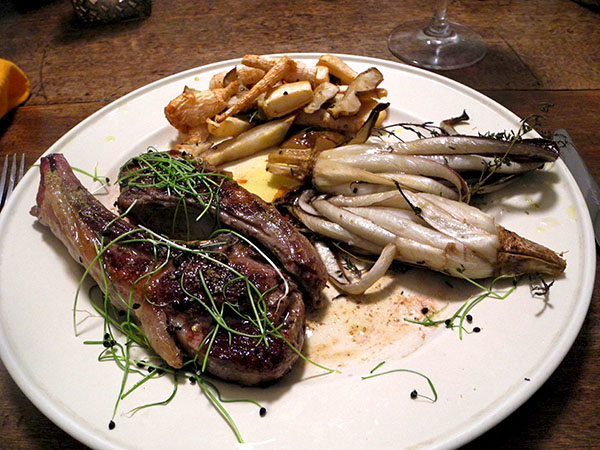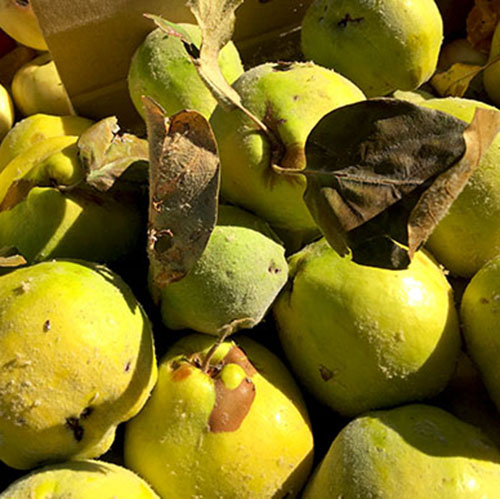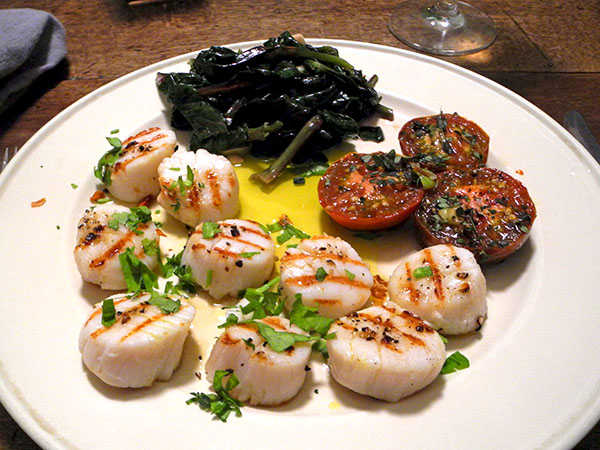
As usual here, all of the main actors ( and most of the supporting cast) were local, but by mid-December some of them are more difficult to assemble. The scallops don’t really have a season, but the tomatoes would clearly have not been able to make it without the help of some creative farming practices, and the very-late-season spinach was likely to have had a lot of help getting onto our table

- eighteen medium scallops (12 ounces) from P.E. & D.D. Seafood, washed, drained and very thoroughly dried on paper towels (twice), generously seasoned with salt and pepper, pan grilled for about 90 seconds on each side, finished with a squeeze of organic lemon from Whole Foods Market and one piece of crushed orange/gold dried habanada pepper [although I should have added it before they were grilled], chopped lovage from Two Guys from Woodbridge, drizzled with some good olive oil
- three medium-size ‘Expresso heirloom’ tomatoes from Cherry Lane Farm, washed, dried, halved, heated in a little olive oil inside a 19th-century enameled cast iron porringer, in which the chopped white section of one tiny leek from Willow Wisp Farm had first been sautéed until tender, seasoned with sea salt and freshly-ground black pepper and sprinkled with chopped thyme leaves from Stokes Farm
- red-vein spinach (”Red Kitten’) from Alewife Farm, washed in several changes of water, drained, very gently wilted (that is, not reduced too far) inside a large, very heavy, high-sided tin-lined copper pot in a little olive oil in which 2 large cloves of Rocambole garlic from Keith’s Farm, quartered, had first been allowed to sweat, seasoned with sea salt, freshly-ground black pepper, a little dried peperoncino Calabresi secchi from Buon Italia, drizzled with a little organic lemon and a bit more of the olive oil
- the wine was a California (Sonoma) white, Scott Peterson Rumpus California Sauvignon Blanc 2016
- the music was Handel’s gorgeous 1747 opera, ‘Arminio’, George Petrou directing the ensemble Armonia Atenea, with Xavier Sabata (Countertenor), Max Emanuel Cencic (Countertenor), Ruxandra Donose (Mezzo Soprano), Layla Claire (Soprano), Vince Yi (Countertenor), Juan Sancho (Tenor), and Petros Magoulas (Bass); count them: 3 countertenors, 3!
